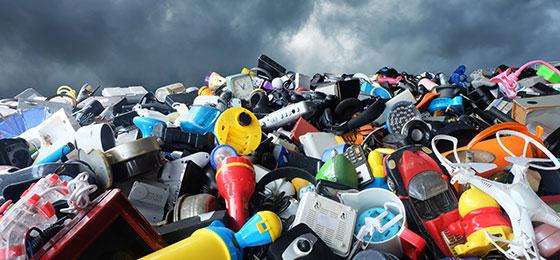Completed project: Waste management to support the energy turnaround

The wastEturn project aimed at optimising the contribution of the Swiss waste management system to the energy turnaround by means of direct and indirect energy savings.
Waste is both a material and an energetic resource, potentially contributing to the energy strategy by direct energy recovery (i.e. waste-to-energy systems) and indirect energy saving (i.e. substitution of primary materials through recycling and avoidance of energy demand in the production of primary materials).
The overarching aim of the joint project headed up by Prof. Stefanie Hellweg from the Institute of Environmental Engineering at the ETH Zurich was to optimise the contribution of the Swiss waste management system to the energy turnaround, taking into account direct energy and indirect energy savings, and to develop strategies that are socially robust. The optimisation targeted the environmental as well as the economic dimension.
Results
Detailed analysis of yearly energetic potentials in Swiss waste management highlighted the energetic importance of municipal solid waste (MSW) with 64 PJ lower heating value and the chemical and pharmaceutical sector with 4 PJ of industrial waste (IW). Aiming at robust optimisation, umbrella scenarios were developed based on existing energy scenarios and complemented by “waste storylines” describing different developments of waste amounts and compositions. These waste storylines were jointly defined by project researchers and industrial and governmental experts. The MSW and IW systems were then optimised taking into account a range of boundary conditions defined within the umbrella scenarios. In all scenarios, the contribution from MSW to the energy turnaround can be increased by maximising recycling efforts for most fractions. In some scenarios, the indirect energy contribution of MSW management could even be doubled compared to 2012. Indirect energy savings increased with the quality of collected materials, enabling the substitution of high-impact primary materials. This finding highlighted the importance of clean source separation and advanced recycling processes. The optimisation yielded financial trade-offs, as increased recycling could also cause increased costs, which have to be covered by higher revenues for recovered energy and materials, fees or taxes. Higher energy and material revenues may, depending on future market prices, be able to compensate the recycling costs, leading to a financially self-sustaining recycling industry. In addition, the energetic optimisation of IW management in Switzerland showed the possibility of increased utilisation of solvents and mother liquors as alternative fuels (+8%). Increasing local thermal utilisation of waste also decreases transport of hazardous chemicals. The potential contribution of waste-to-energy systems to the energy turnaround was found to depend significantly on future waste levels and compositions.
